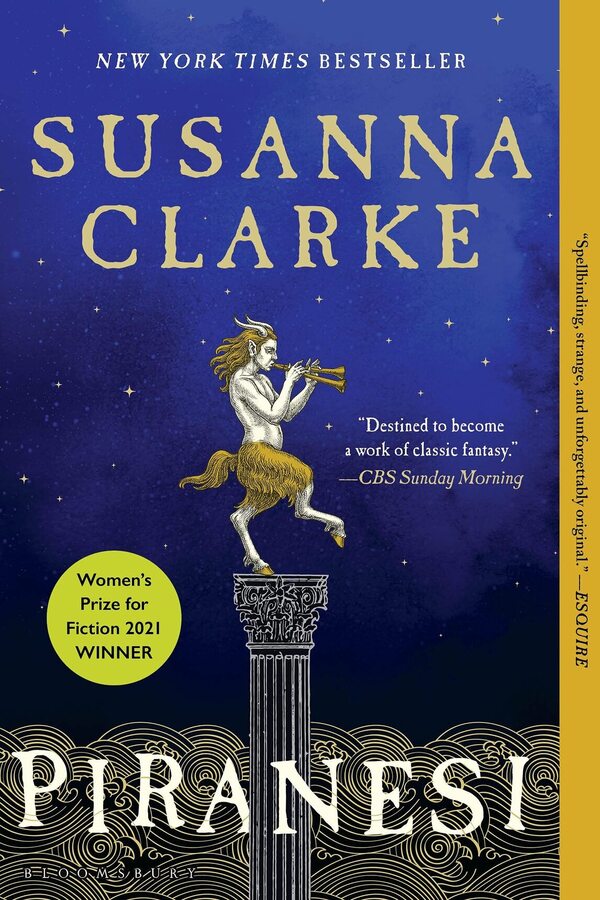Piranesi: A Journey in Worlds and Words
Both beautiful and intriguing, with a puzzle-like ambience, Suzanna Clarke’s Piranesi is definitely a spellbinding read. Although it stands only at 245 pages, the captivating story more than makes up for it. Piranesi is a middle-aged man living in what he calls “The House”, a labyrinth of marble ruins flooded by salt water that snakes infinitely in all directions. Filled with ancient white marble statues and a thriving marine ecosystem, Piranesi dedicates his life to exploring and recording this great House. He writes dutifully in his notebooks the descriptions of each statue, hallway, and room. But as Piranesi explores and ponders, evidence of another world and a forgotten past, begin to emerge.
Worldbuilding is one of the most important elements of fantasy books, and Piranesi nails it. The characters change and develop throughout the story, especially The Other and how the reader views him. Clarke draws us in with a magnificent and grand setting of the house, its flowing tides and labyrinthine halls intricately described. The way plant and animal life finds a way to settle among the cold, white marble makes for a whimsical landscape – not quite natural or artificial.
Piranesi’s themes and the many ways the reader can choose to interpret them makes it a personalized experience for all readers. One of the themes of Piranesi is discovery and finding anew. When he looks back to his older journals, Piranesi first finds them incomprehensible, as if written by a madman. But as he reads on and finds more about his past life, his attitude changes. He learns to accept that he isn’t who he thought he was, nor is he who he actually was.
The book’s story unfolds in an interesting way, leaving the fantastical world of The House and integrating it with the world we know today. It’s quite a challenge to imagine, but Clarke does this well. Piranesi’s reaction to Earth in the 2010s is natural, and his childlike surprise to this new world is fascinating to see.
The names and descriptions in this book can become confusing at times, with the first 30 pages being the hardest to get through. The introduction, while not lengthy, introduces many elements specific to the story. The myriad of times Piranesi describes the locations of the halls and descriptions of the statues seems important but, in the end, it is not. With his narration, Piranesi is thorough, if not a bit too thorough.
Overall, this book was very enjoyable for me to read, though a bit frustrating at times. A fast reader could likely finish the whole book in one sitting, but I finished in about 2. Although Clarke’s pacing is phenomenal, I often found myself being slowed down at the beginning of the book by the way Piranesi unnecessarily capitalizes so many words. I would give this book 4.7 shields out of 5. Happy reading!

Howdy there! My name is Sophia Zeng and I'm a freshman at Hidden Valley High School. This is my first year in Journalism. I've always loved writing, and...











